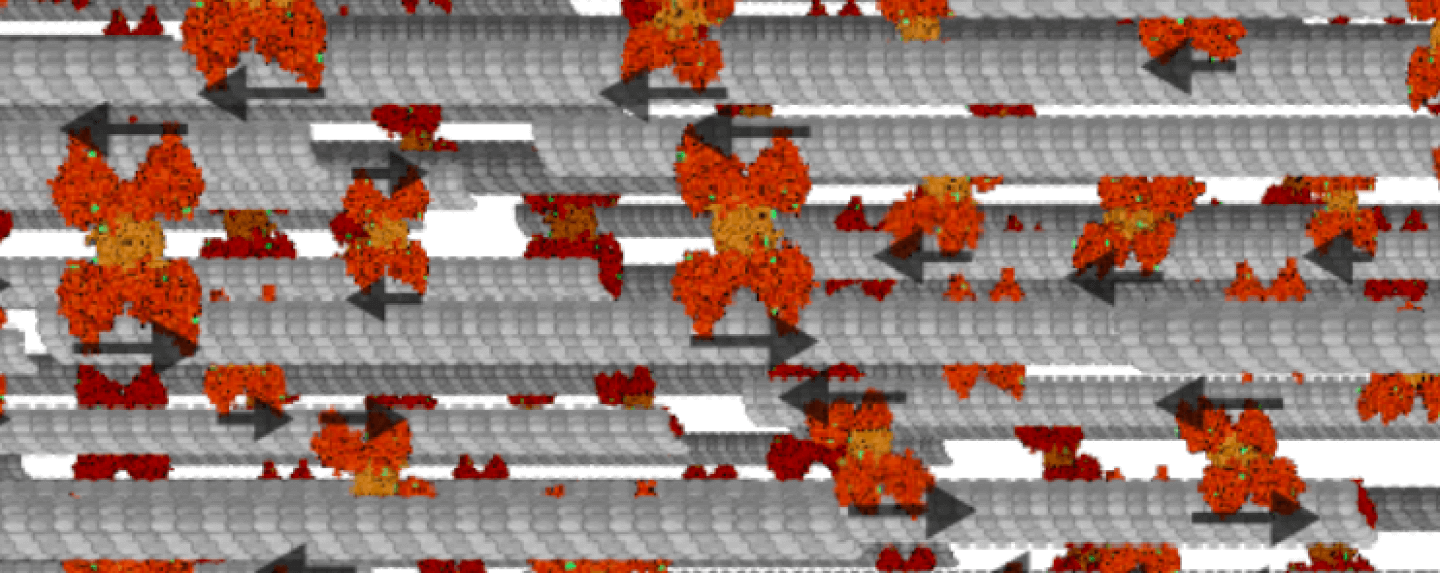An unprecedented look at biological energy on the sub-cellular level
By detecting nanoscopic heat changes inside cells, first-of-their-kind sensors reveal how living systems use energy
By Kat J. McAlpine
March 31, 2023
Life is fueled by energy—molecular structures, cellular machinery, cells, and entire organisms all need to metabolize chemicals and generate energy to develop, function, move around, and stay alive. And when energy use starts to go wrong, the impact can be life changing. Many diseases are caused when problems arise in the way an organism or its cells metabolize energy. Neurodegenerative diseases, for example, arise when metabolic issues hamper brain cells from functioning normally. Exactly why, however, has been unknown.

"You can put a person or animal on a treadmill and you can determine how much caloric energy it takes that organism to run," says Daniel Needleman, the Gordon McKay Professor of Applied Physics at the Harvard John A. Paulson School of Engineering and Applied Sciences (SEAS) and Professor of Molecular and Cellular Biology. "To date, we've learned a lot about energy usage on the organismal level, but almost nothing is known about energy usage on the cellular and subcellular level."
A breakthrough in energy measurement
New research led by Joost Vlassak's lab at SEAS, published in the Proceedings of the National Academy of Sciences (PNAS), reveals that previous estimates of the amount of energy expended by cell structures have been off by a factor of a billion. Using first-of-its-kind pico-calorimetry instrumentation that can precisely detect energy on the nanowatt and picowatt level, the team says it's now possible to accurately measure the amount of energy used by subcellular structures.
The instrumentation and technique, devised by engineers working with Vlassak— the Abbott and James Lawrence Professor of Materials Engineering at SEAS—was developed several years ago to bridge the gap in scientists' ability to sense energy on the nanoscale. It requires careful design and micromachining of sensors that can detect almost-imperceptible changes in temperature, indicating energy exertion. After they proved it could work on materials and chemicals, the team turned their sights on adapting the method to use in living systems and cells.
To apply the technique to energy usage in biological samples, they modified their instrument to be able to measure heat loss in microliters of liquid samples. Comparing heat production between a sample and its background environment allows researchers to detect minute temperature differences as a result of heat generation on the picowatt scale.
Joining forces with Needleman, a senior author of the PNAS paper, engineers from Vlassak's group and other collaborators deployed their calorimetry method to analyze energy in microtubules and skeletal cell filaments, parts of cells that are crucial for determining cell shape, motions, and more.
"Previously, scientists might see something moving around in a cell and try to estimate the amount of energy it would take," Needleman says. "Our new measurements indicate those guesses can be off by about a billion-fold."
Those observations open up fascinating questions that could lead to a better understanding of how energy is used by living systems and also provide insights into how synthetic biomaterials could be made to function more efficiently.
Real-world applications
"I'm especially excited about the potential to use this technique to diagnose diseases or treat people—for instance, it could be used to determine whether bacteria are antibiotic resistant in a matter of minutes," Vlassak says. "In contrast, today's best methods can take a few days, and meanwhile, a patient might be prescribed an antibiotic for several days before tests reveal the infection is resistant to that drug."
Such an application could be possible because the method is sensitive enough to detect slight energy drops that indicate the very beginning of the death process in cells, long before cells die. It could therefore be used to screen an assay of different antibiotics to see which drug will work best at killing microbes in a personalized, case-by-case fashion. The team recently received a Grid Accelerator award from SEAS and Harvard's Office of Technology Development to further advance the technique toward commercialization.
Meanwhile, Needleman is interested in further studies of the energy it takes for cells to build spindles or proteins, process information, or for embryonic development. If energy use is disturbed in these scenarios, how are those critical functions perturbed?
"For example, one of the focus areas of my lab is studying mammalian egg cells, early-stage embryos, and applications to treat age-related infertility in women," he says. "One hypothesis is that age-related infertility is related to metabolic problems acquired by egg cells of older people. Using this method, we can begin to explore if that hypothesis might be correct, and to investigate how we might fix that problem."
Authorship, funding, disclosures
Additional authors include Peter J. Foster, Jinhye Bae, Bezia Lemma, Juanjuan Zheng, William Ireland, Pooja Chandrakar, Rémi Boros, and Zvonimir Dogic.
Harvard's Office of Technology Development is exploring commercialization opportunities for the intellectual property related to this study.
This work was supported by the Harvard University MRSEC, which is funded by the National Science Foundation (NSF) (grant nos. DMR-1420570, DMR-2011754, DMR-2004380, and ECCS-2025158), Brandeis NSF MRSEC, Bioinspired Soft Materials (grant nos. DMR-2011846 and DMR-2004617), discussions with participants of the "Active 20" and "Cellular Energetics" KITP programs supported in part by the NSF (grant no. PHY-1748958), the National Institutes of Health (grant no. R25GM067110), and the Gordon and Betty Moore Foundation (grant no. 2919.02), the UC San Diego Materials Research Science and Engineering Center NSF MRSEC (grant no. DMR-2011924), and the Gordon and Betty Moore Foundation for support as a Physics of Living Systems Fellow (grant no. GGBMF4513).
